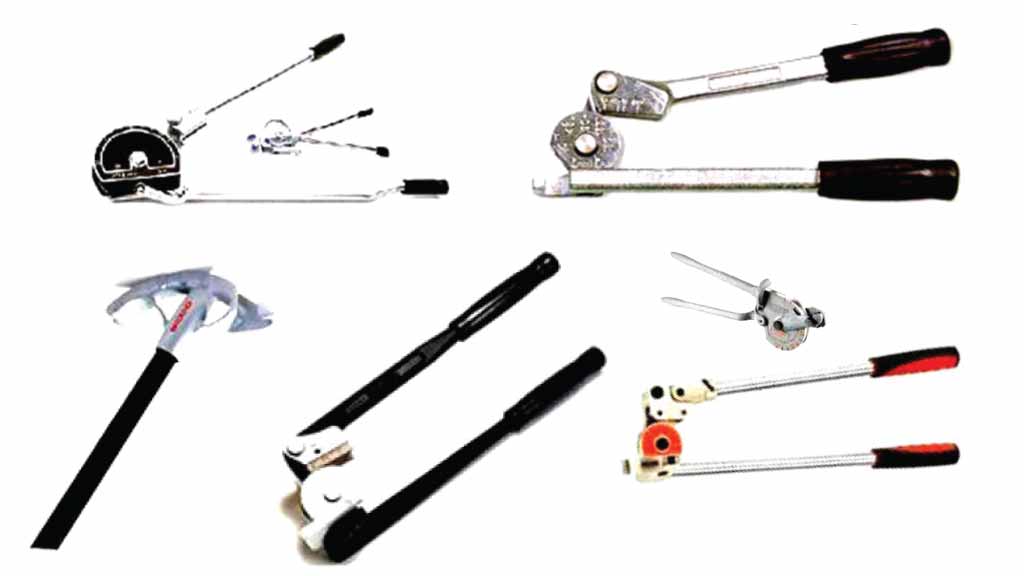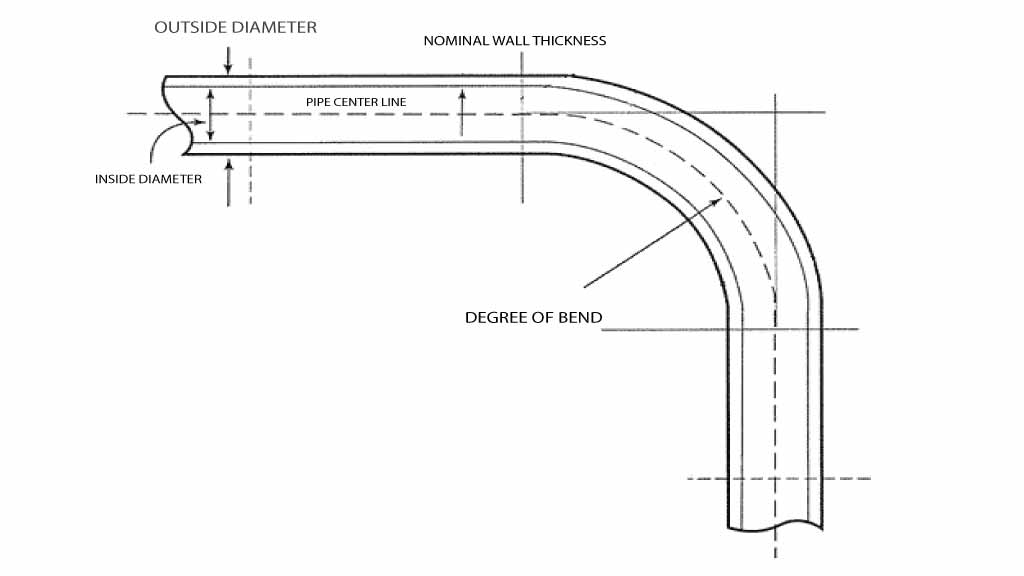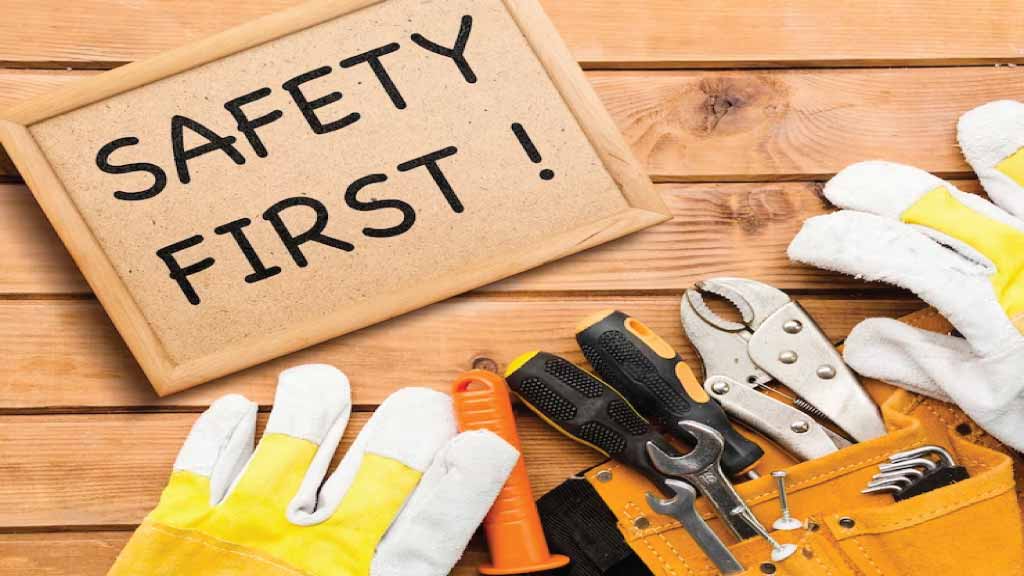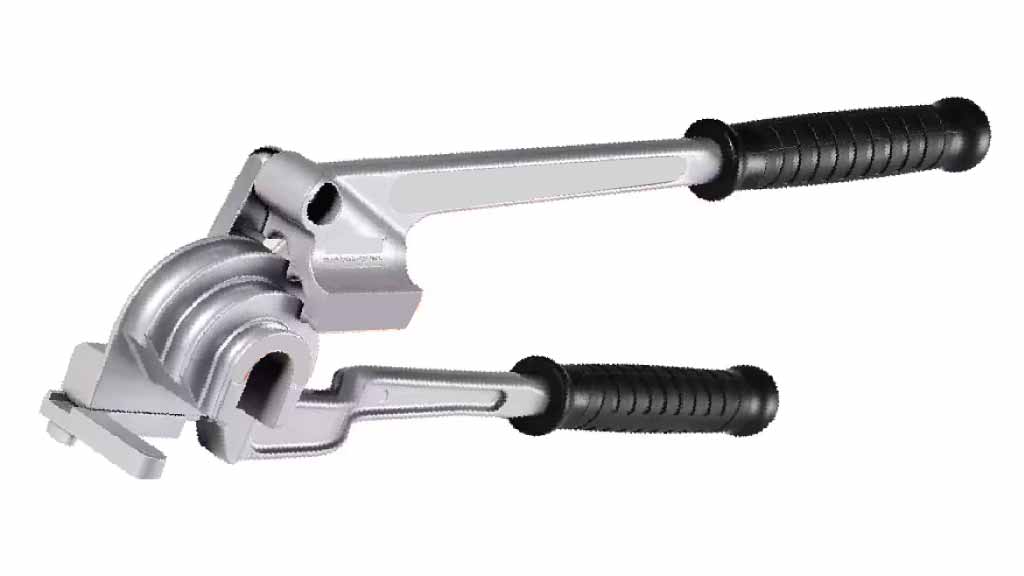Pipe bending is an indispensable skill across multiple industries, such as plumbing, HVAC, automotive, and construction. Whether you are a seasoned professional or an enthusiastic hobbyist, proficiency in pipe bending is paramount for achieving accurate and effective results. This comprehensive guide is designed to provide you with a solid foundation in pipe bending techniques.
Understanding the fundamentals of pipe bending is crucial. From the types of pipe benders available to the various bending techniques, this guide covers it all. Safety precautions are also emphasized to ensure the well being of both the operator and bystanders.
Moreover, practical tips are included to help enhance your pipe bending skills, such as selecting the right materials, maintaining equipment, and troubleshooting common issues. By mastering the art of pipe bending, you’ll not only improve your efficiency and productivity but also elevate the quality of your workmanship in your respective industry.
What is a Pipe or Tube Bender?
A pipe or tube bender is a tool or machine used to bend pipes and tubes into specific angles or shapes while maintaining their structural integrity. It is commonly used in industries like plumbing, construction, and automotive to create accurate bends in various materials.
1. Functionality of Pipe or Tube Benders
Pipe benders work by applying force to the material, allowing it to curve without causing damage like kinks or distortion. They are designed to handle different materials, including steel, aluminum, copper, and PVC, providing smooth and precise bends for various applications.
2. Applications of Pipe or Tube Benders
These tools are widely used in plumbing, construction, automotive, and HVAC industries. In plumbing, they bend pipes for water systems; in automotive, they are used for exhaust systems and roll cages. HVAC professionals use them to bend ducts, while construction applications require them for architectural piping and structural supports.
Types of Pipe or Tube Benders

Pipe bending is a crucial skill in various industries, and having the right equipment is essential for achieving precise and efficient results. This chapter explores the different types of pipe benders available in the market, ranging from manual to hydraulic and electric/mechanical variants.
Manual Pipe Benders
Manual pipe benders are widely used for bending pipes in various applications. They come in three main forms:
1- Hand held Pipe Benders: Handheld benders offer portability and flexibility, making them suitable for on-site bending tasks. They are operated manually by exerting force on the handles, allowing for precise bends to be made quickly.
2- Bench-Mounted Pipe Benders: Bench-mounted benders provide stability and control, making them ideal for workshop environments. These benders are secured to a bench or workstation, allowing for consistent and accurate bends to be achieved with ease.
3- Hydraulic Manual Pipe Benders: Hydraulic manual benders utilize hydraulic power to exert force on the pipe, making them suitable for heavy-duty bending tasks. These benders offer increased efficiency and can handle thicker-walled pipes with ease.
Hydraulic Pipe Benders
Hydraulic pipe benders are powerful machines designed for heavy duty bending tasks. They utilize hydraulic pressure to exert significant force on the pipe, allowing for precise bends to be made effortlessly. Hydraulic benders are commonly used in industrial settings where high-volume bending is required.
Electric and Mechanical Pipe Benders
Electric and mechanical pipe benders are automated systems that offer increased efficiency and productivity. They are designed for high volume bending operations and can handle a wide range of pipe sizes and materials. These benders eliminate the need for manual labor, making them ideal for large scale manufacturing environments.
Comparison of Different Types
When comparing different types of pipe benders, several factors must be considered, including efficiency, precision, and cost.
1- Efficiency: Hydraulic pipe benders are known for their high efficiency, thanks to the powerful hydraulic systems that enable them to exert significant force on the pipe. Electric and mechanical benders also offer high efficiency, as they automate the bending process, reducing the need for manual labor.
2- Precision: Hydraulic and electric/mechanical pipe benders offer excellent precision, allowing for accurate bends to be made consistently. Manual pipe benders can also achieve precise bends, but they may require more skill and experience to operate effectively.
3- Cost: Manual pipe benders are generally more affordable compared to hydraulic and electric/mechanical benders, making them a cost-effective option for smaller-scale operations. Hydraulic and electric/mechanical benders require a larger initial investment but offer increased efficiency and productivity in the long run.
Each type of pipe bender offers unique advantages and is suited to different applications. Understanding the capabilities and limitations of each type is essential for selecting the most suitable option based on specific bending requirements and budget constraints.
Pipe Bending Techniques

Bending techniques are crucial aspects of pipe fabrication, determining the quality, accuracy, and efficiency of the final product. This chapter explores various bending techniques commonly employed across industries, their applications, and considerations for selecting the appropriate method based on specific materials and requirements.
Mandrel Bending
Mandrel bending involves using a mandrel, a solid rod inserted into the pipe, to support the inner curve during bending. This technique ensures uniformity and prevents deformation or collapse of the pipe’s inner wall. Mandrel bending is ideal for producing smooth, consistent bends in pipes with minimal distortion. It is commonly used in applications where precision and structural integrity are paramount, such as in automotive exhaust systems, handrails, and architectural structures.
Rotary Draw Bending
Rotary draw bending utilizes a die and pressure to form precise bends in pipes. The pipe is clamped and drawn through the die while a bending arm applies pressure to achieve the desired bend radius. This technique allows for tight-radius bends and complex geometries to be achieved with high accuracy. Rotary draw bending is commonly employed in industries such as aerospace, automotive, and furniture manufacturing, where intricate and customized bending requirements are prevalent.
Heat Bending
Heat bending involves softening the pipe with heat before bending to increase its flexibility and reduce the risk of cracking or deformation. Heat sources such as torches, induction heaters, or ovens are used to heat the pipe uniformly to the desired temperature range, allowing for easy manipulation. This technique is particularly useful for bending thermoplastic pipes like PVC, CPVC, and certain types of metals like aluminum and copper. Heat bending enables the creation of smooth, gradual bends without introducing stress concentrations or weakening the material’s structural integrity.
Ram Bending
Ram bending utilizes hydraulic or mechanical force applied directly to the pipe to induce bending. A ram, or piston, exerts pressure on the pipe, causing it to bend around a fixed bending die or form. This technique is suitable for heavy duty bending tasks and can accommodate a wide range of pipe sizes and materials. Ram bending is commonly used in industries such as shipbuilding, construction, and infrastructure development, where large-diameter pipes and high-strength materials are prevalent.
Compression Bending
Compression bending involves bending the pipe around a form using external pressure. The pipe is clamped between a bending die and a counterforming die, and pressure is applied to the outer surface of the pipe to induce bending. This technique is versatile and can produce bends with varying degrees of curvature. Compression bending is commonly used in industries such as plumbing, HVAC, and furniture manufacturing, where precise bends are required for routing pipes and tubes around obstacles or through confined spaces.
Choosing the appropriate bending technique depends on factors such as the material properties, desired bend radius, dimensional tolerances, and production volume. By understanding the characteristics and capabilities of each technique, manufacturers and fabricators can select the most suitable method to meet their specific bending requirements efficiently and effectively.
Safety Precautions

Ensuring safety in pipe bending operations is paramount to protect workers from potential hazards and prevent accidents. This chapter highlights essential safety precautions, including the use of personal protective equipment (PPE), proper equipment setup and maintenance, safe handling and lifting techniques, and hazard identification and mitigation.
Personal Protective Equipment (PPE) for Pipe Bending
Wearing appropriate PPE is critical to safeguard workers from injuries during pipe bending activities. PPE may include:
1- Safety Glasses or Goggles: Protect eyes from debris, sparks, and potential splashing of chemicals or hot materials.
2- Gloves: Prevent cuts, abrasions, and burns while handling pipes and operating bending equipment.
3- Steel-Toe Boots: Provide foot protection against heavy objects, falling debris, and crushing hazards.
4- Ear Protection: Minimize exposure to loud noises generated by bending machinery or surrounding equipment.
5- Respiratory Protection: Shield against inhalation of dust, fumes, or airborne contaminants generated during bending processes.
Proper Setup and Maintenance of Pipe Bending Equipment
Ensuring the proper setup and regular maintenance of pipe bending equipment is crucial to prevent malfunctions and reduce the risk of accidents. Key safety measures include:
1- Inspecting Equipment: Regularly check bending machines, hydraulic systems, clamps and dies for signs of damage, wear, or leaks.
2- Securing Work Area: Maintain a clean, clutter-free workspace to minimize tripping hazards and facilitate safe maneuvering of materials and equipment.
3- Following Manufacturer Guidelines: Adhere to manufacturer instructions for equipment assembly, calibration, and usage to ensure safe and efficient operation.
4- Using Safety Guards: Install and maintain appropriate safety guards and barriers to prevent accidental contact with moving parts or pinch points.
5- Training and Certification: Provide comprehensive training and certification programs for operators to ensure they are proficient in equipment operation and safety protocols.
Handling and Lifting Techniques to Prevent Injuries
Proper handling and lifting techniques are essential to prevent musculoskeletal injuries and strains among workers. Best practices include:
1- Using Mechanical Aids: Employ mechanical lifting devices such as hoists, cranes, or forklifts to lift and maneuver heavy pipes and materials safely.
2- Team Lifting: When lifting heavy or awkwardly shaped objects, enlist the help of colleagues to distribute the load and reduce the risk of strain.
3- Maintaining Proper Posture: Encourage workers to bend their knees, keep their back straight, and lift with their legs rather than their back to minimize the risk of back injuries.
4- Avoiding Overexertion: Encourage workers to take regular breaks and rotate tasks to prevent fatigue and overexertion, which can lead to accidents or injuries.
Common Hazards Associated with Pipe Bending Operations
Recognizing and addressing potential hazards is essential to maintain a safe work environment. Common hazards in pipe bending operations include:
1- Material Handling Risks: Risks associated with lifting, transporting, and positioning heavy pipes and equipment.
2- Machinery Hazards: Risks related to the operation of bending machines, including entanglement, crushing, and shearing hazards.
3- Chemical Exposure: Risks associated with exposure to hazardous chemicals, gases, or fumes generated during heat bending processes.
4- Slip, Trip, and Fall Hazards: Risks posed by slippery or uneven surfaces, cluttered work areas, or inadequate lighting.
Implementing preventive measures such as hazard assessments, safety protocols, employee training, and regular inspections can help mitigate these risks and create a safer working environment for all personnel involved in pipe bending operations.
Prioritizing safety through the use of appropriate PPE, proper equipment setup and maintenance, safe handling and lifting techniques, and hazard identification and mitigation is essential to protect workers and minimize the risk of accidents or injuries in pipe bending operations.
Practical Tips and Tricks For Pipe or Tube Bending
This chapter offers practical advice and techniques to enhance proficiency and achieve high-quality results in pipe bending operations. It covers essential aspects such as calculating bend allowances and deductions, marking and measuring techniques, prevention of distortion and wrinkling, troubleshooting common bending defects, and finishing and inspecting bent pipes for quality assurance.
Calculating Bend Allowances and Deductions
Accurate calculation of bend allowances and deductions is crucial for achieving precise bends and ensuring the final dimensions of the bent pipe meet the required specifications. Bend allowances compensate for the increase in material length caused by bending, while deductions adjust for the reduction in material length. Understanding the principles of bend allowance calculation, considering factors such as material properties, bend radius, and pipe thickness, helps minimize errors and ensures consistent results in pipe bending operations.
Marking and Measuring Techniques for Accurate Bends
Proper marking and measuring techniques are essential for achieving accurate bends and maintaining dimensional integrity throughout the bending process. Using tools such as protractors, rulers, and marking pens, operators can accurately mark bend locations, angles, and reference points on the pipe surface. Utilizing templates or jigs can further facilitate precise positioning and alignment of bends. Regular verification of measurements during the bending process helps identify and correct deviations promptly, ensuring the final product meets the desired specifications.
Preventing Distortion and Wrinkling During Bending
Distortion and wrinkling are common challenges encountered during pipe bending, often resulting from improper bending techniques or inadequate support. Implementing strategies such as using mandrels or internal supports to maintain the shape of the pipe’s inner curve, controlling the bending process parameters (e.g., bend angle, bend radius), and applying consistent pressure throughout the bend can help minimize distortion and wrinkling. Additionally, selecting appropriate bending methods and equipment suited to the material properties and application requirements can mitigate these issues and ensure smooth, uniform bends.
Troubleshooting Common Bending Defects
Effective troubleshooting of common bending defects is essential for identifying underlying causes and implementing corrective measures to rectify issues promptly. Springback, the tendency of a pipe to return to its original shape after bending, can be mitigated by adjusting bending parameters or employing techniques such as overbending. Ovality, the distortion of the pipe cross-section during bending, can be minimized by using proper support and mandrels, controlling material properties, and optimizing bending methods. Regular inspection and analysis of bent pipes for defects enable operators to address issues early in the process and maintain quality standards.
Finishing and Inspecting Bent Pipes for Quality Assurance
Proper finishing and inspection procedures are critical for ensuring the quality and integrity of bent pipes. Techniques such as deburring, sanding, and polishing help remove sharp edges, burrs, and surface imperfections, enhancing aesthetics and functionality. Visual inspection and dimensional measurement verify compliance with specifications and identify any defects or irregularities requiring correction. Implementing robust quality assurance protocols throughout the bending process helps guarantee the reliability and performance of the final product, satisfying customer requirements and industry standards.
By incorporating these practical tips and techniques into pipe bending operations, operators can improve efficiency, accuracy, and quality, ultimately enhancing overall productivity and customer satisfaction.
Advanced Topics
This chapter delves into advanced topics in the realm of pipe bending, exploring complex techniques, considerations, and emerging trends shaping the field. From compound bending to the integration of pipe bending with other fabrication processes, this section provides insights into the intricacies and innovations driving advancements in pipe bending technology and practice.
Compound Bending: Bending Pipes in Multiple Planes
Compound bending involves bending pipes in multiple planes simultaneously or sequentially to achieve complex geometries and configurations. This advanced technique is employed in applications requiring intricate bends or irregular shapes, such as aerospace components, architectural structures, and custom fabrications. Compound bending requires meticulous planning, precise control of bending parameters, and specialized equipment to ensure accurate and uniform bends across multiple axes.
Tube Bending vs. Pipe Bending: Key Differences and Considerations
While tube bending and pipe bending share similarities, they also exhibit distinct characteristics and considerations. Understanding the differences between the two processes, including material properties, dimensional tolerances, and application requirements, is essential for selecting the appropriate method. Tube bending typically involves smaller diameter tubes with thinner walls, often used in industries such as automotive, aerospace, and instrumentation. Pipe bending, on the other hand, encompasses larger diameter pipes with thicker walls, commonly utilized in plumbing, HVAC, and structural applications. Each process has unique challenges and considerations related to material handling, bending techniques, and quality control.
Design Considerations for Bent Pipe Assemblies
Designing bent pipe assemblies requires careful consideration of factors such as bend radius, bend angle, material properties, and structural requirements. Engineers and designers must assess the feasibility and practicality of incorporating bent pipes into assemblies, ensuring compatibility with surrounding components and adherence to performance specifications. Finite element analysis (FEA) and computer aided design (CAD) software facilitate the optimization of bent pipe designs, enabling virtual testing and refinement of designs before fabrication. Proper design considerations contribute to the functionality, reliability, and longevity of bent pipe assemblies in diverse applications.
Integration of Pipe Bending with Other Fabrication Processes
Pipe bending is often integrated with other fabrication processes, such as welding, machining, and assembly, to create complex assemblies and structures. Seamless integration of these processes requires careful coordination, alignment, and quality control to ensure precise fitment and functionality. Advanced manufacturing techniques, such as robotic welding and CNC machining, streamline the integration of pipe bending with other processes, enhancing efficiency, accuracy, and repeatability in fabrication workflows.
Emerging Trends and Technologies in the Field of Pipe Bending
The field of pipe bending is witnessing continuous evolution driven by emerging trends and technologies. Innovations such as additive manufacturing (3D printing), automated bending systems, and predictive analytics are revolutionizing pipe bending processes, enabling faster production cycles, increased customization, and enhanced quality control. Additionally, advancements in materials science, including the development of high-strength alloys and composites, expand the possibilities for pipe bending applications in demanding environments and industries.
By exploring advanced topics in pipe bending, practitioners gain insights into cutting edge techniques, considerations, and technologies shaping the future of the field. These advancements drive innovation, efficiency, and competitiveness, positioning pipe bending as a vital component of modern manufacturing and fabrication industries.
Conclusion:
Mastering pipe bending demands a blend of theoretical comprehension, practical expertise, and a keen focus on safety. Delving into the fundamentals, selecting appropriate equipment, and honing diverse bending techniques are pivotal steps toward proficiency. Whether the aim is functional applications or artistic endeavors, this comprehensive guide furnishes individuals with the essential resources to excel in the art of pipe bending. With a solid grasp of the underlying principles and ample practice, one can adeptly shape pipes to fulfill the varied requirements of contemporary industries.
From plumbing and HVAC systems to automotive and architectural projects, the ability to bend pipes with precision and efficiency opens doors to endless possibilities, empowering practitioners to bring their visions to life through the mastery of this versatile craft.
FAQs:
How can I prevent wrinkling and distortion when bending pipes?
To prevent wrinkling and distortion during pipe bending, ensure proper support and alignment throughout the bending process. Using mandrels or internal supports helps maintain the shape of the pipe’s inner curve, while controlling bending parameters such as bend radius and material thickness minimizes the risk of deformation. Additionally, selecting appropriate bending techniques and equipment suited to the material properties and application requirements can mitigate these issues effectively.
What are the key differences between tube bending and pipe bending?
Tube bending and pipe bending share similarities but exhibit distinct characteristics. Tube bending typically involves smaller diameter tubes with thinner walls, commonly used in industries such as automotive and aerospace. Pipe bending, on the other hand, encompasses larger diameter pipes with thicker walls, prevalent in plumbing, HVAC, and structural applications. Understanding these differences is essential for selecting the appropriate bending method based on specific material properties and application requirements.
How do I calculate bend allowances and deductions for accurate pipe bending?
Calculating bend allowances and deductions is crucial for achieving precise bends and ensuring the final dimensions of the bent pipe meet required specifications. Bend allowances compensate for the increase in material length caused by bending, while deductions adjust for the reduction in material length. Understanding the principles of bend allowance calculation, considering factors such as material properties, bend radius, and pipe thickness, helps minimize errors and ensures consistent results in pipe bending operations.
What are the safety precautions I should take when bending pipes?
When bending pipes, prioritize safety by wearing appropriate personal protective equipment (PPE), maintaining proper equipment setup and maintenance, and adhering to safe handling and lifting techniques. Identifying and mitigating common hazards associated with pipe bending operations, such as material handling risks and machinery hazards, is essential for maintaining a safe work environment. Implementing robust safety protocols and providing comprehensive training for operators contribute to preventing accidents and injuries in pipe bending operations.
How can I troubleshoot common bending defects like springback and ovality?
Effective troubleshooting of common bending defects involves identifying underlying causes and implementing corrective measures promptly. Springback, the tendency of a pipe to return to its original shape after bending, can be mitigated by adjusting bending parameters or employing techniques such as overbending. Ovality, the distortion of the pipe cross section during bending, can be minimized by using proper support and mandrels, controlling material properties, and optimizing bending methods. Regular inspection and analysis of bent pipes for defects enable operators to address issues early in the process and maintain quality standards.
Image used by Freepik

